
This tutorial provides information about El Nino - its early warning signs, its ancient past, its global connections, and its impacts on the globe.
- Subject:
- Science
- Material Type:
- Interactive
- Provider:
- Smithsonian Institution
- Date Added:
- 07/02/2018

This tutorial provides information about El Nino - its early warning signs, its ancient past, its global connections, and its impacts on the globe.

This guide was developed to support teachers in teaching topics with real-world context, and provide them with the background to feel competent and comfortable when teaching about the climate change. The guide includes numerous education features, such as teaching tips and student thinking, that help to connect the content to classroom practice.

In this lesson, students will run the climate modeling software, Educational Global Climate Modeling Suite (EdGCM), to visualize how temperature and snow coverage might change over the next 100 years. They will begin by running a "control" climate simulation to establish a baseline for comparison. After this first simulation, they will run a second "experimental" simulation. Then they will compare and contrast the changes in temperature and snow and ice coverage that could occur due to increased atmospheric greenhouse gases. Next, students will choose a region of their own interest to explore and compare their modeling results with those documented in the Intergovernmental Panel on Climate Change (IPCC) impact reports. Through working with EdGCM, they will gain a greater understanding and appreciation of the process and power of climate modeling.
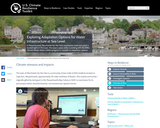
In Massachusetts, Manchester-by-the-Sea's wastewater treatment plant is located right on the coast. The town's water utility is working with the EPA's Climate Ready Water Utilities program to consider its adaptation options.

In this lesson, students will use modeled climatological data from the University of New Hampshire's EOS-EarthData, and obtain modeled, annual predictions for minimum temperature, maximum temperature, precipitation, and solar radiation for Minnesota and California. This will enable them to explore climate change's impacts on two very different regions. Data used in this chapter will span the years 2000 through 2100. Students will import the data into a spreadsheet application and analyze it to interpret regional differences. Finally, they will download data for a third state of their choice and compare the new data with the first two states in order to answer a series of questions about the regional differences in climate change.

In this lesson, students examine global climate model output available online and consider the potential impact of global warming on tropical cyclone initiation and evolution. As a follow-up, students read two short articles on the connection between hurricanes and global warming and discuss these articles in context of what they have learned from model output.

In this unit, students will develop an understanding of climate change and how it is different from climate variability. Students will read articles and access data, maps, and graphs of trends. They will also view several short video clips and learn about and compare climate models. Students will see how climate impacts life and life impacts climate in both short and long timescales.

In this activity students will learn about climate change. Students will also learn about some of the indicators of climate change and view graphs showing the rates of change in the selected indicators.

In this lab, students will get a better sense of how rapidly the most recent—century-scale—changes in global temperature are taking place as compared to past—millennial-scale—changes. They will gain a better understanding of the interrelationship between global temperatures and atmospheric concentrations of the greenhouse gases, especially carbon dioxide. Students will also view satellite maps showing the spatial patterns of global warming over the past 150 years.

In this lab, students will look forward in time and learn about climate models and view the projected changes in climate for the upcoming century. This lab also includes different scenarios that can affect climate in the future.

In this lesson, students explore recent changes in the Arctic's climate that have been observed and documented by indigenous Arctic residents. Students watch a video, take notes, and create a concept map. Students also examine historical weather data for an Arctic community.
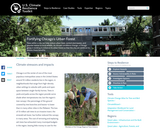
Trees within a city can help reduce urban heat, control stormwater, and provide habitat to local wildlife. As climate conditions change, a Chicago group is working to enhance its urban forest so that the city can continue to receive these benefits.

This video demonstrates how satellites are used to track ice cover and global warming.
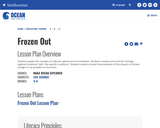
Students will read scientific text about top predators in Arctic marine ecosystems and how they may be affected by global climate change. Students will work individually or collaboratively to write a report based on the scientific text they have read and participate in a large-group discussion session based on their analysis.
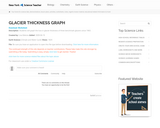
Students graph the loss in glacier thickness of three benchmark glaciers since 1965.
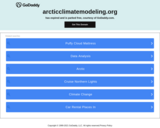
In this lesson, students will learn about global climate change, what causes global warming, and scientific projections about climate change in the near future.

This interactive shows the change in ice levels on the planet.

This demonstration uses a water balloon to show how Earth's oceans are absorbing most of the heat trapped on our warming world.
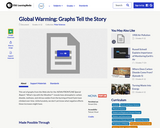
This set of graphs from the Web site for the NOVA/FRONTLINE Special Report: "What's Up with the Weather?" reveals how atmospheric carbon dioxide, methane, and nitrous oxides from the burning of fossil fuels have climbed over time. The graphs show data collected during the study of ice core samples and are featured in the article "Stories in the Ice." Supplemental resources, including a background essay and discussion questions, are also provided.

This resource is a part of the Global Warming Statistics lesson plan. This resource includes links to student resources for the lesson.